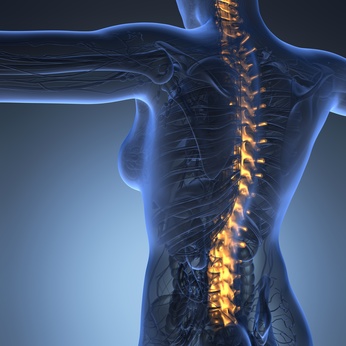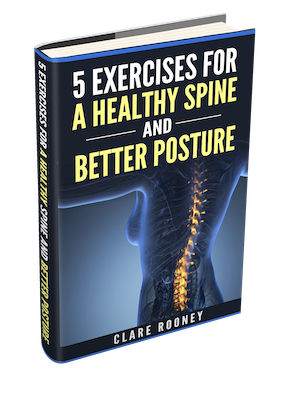The Many Forms and Effects of Postural Dysfunction

The Last Temptation: How to Kill Your Cravings for Good!
September 27, 2018
The Vegan Dilemma
September 5, 2022What is Posture?
Let’s first of all define posture:
“Posture is usually defined as the relative arrangement of the parts of the body. Good posture is that state of muscular and skeletal balance which protects the supporting structures of the body against injury or progressive deformity, irrespective of the attitude (erect, lying, squatting, or stooping) in which these structures are working or resting. Under such conditions the muscles will function most efficiently and the optimum positions are afforded for the thoracic and abdominal organs. Poor posture is a faulty relationship of the various parts of the body which produces increased strain on the supporting structures and in which there is less efficient balance of the body over its base of support.” 1
How posture affects our Health
So posture, clearly, is not simply a matter of aesthetics. Poor posture can affect our health in many deleterious ways:
1. It affects our capacity to breathe fully and efficiently.
2. Poor breathing mechanics will affect our energy levels, focus, mood and capacity to stabilise the body correctly.
3. Poor posture affects the stress response. In a study2 published in the journal Health Psychology subjects were placed in a slumped seated posture or an upright seated posture and they performed Trier Social Stress Speech Task.
“Upright participants reported higher self-esteem, more arousal, better mood, and lower fear, compared to slumped participants.”
The study concluded that sitting with a better posture “may be a simple behavioural strategy to help build resilience to stress.”
4: Poor posture increases risk of low back pain. In the journal BMC of Musculoskeletal disorders subjects with increased lordosis (excessive curvature of lumbar spine) had greater risk of degenerative Joint disease (also known as Osteoarthritis).
“We found a highly significant curvilinear correlation between lordosis and DJD of the lower lumbar spine in both sexes, but especially in women, irrespective of the effects of age.” 3
5. A closed contracted posture can make us feel powerless and even reduce our testosterone and increase our cortisol levels.4
The Most common Forms of Postural Dysfunction

1: Hyper Lordosis
Hyper Lordosis is an excessive curvature of the lumbar spine (low back). It’s usually coupled with an anterior or forward tilt of the pelvis. People with this posture get tired and sore in the muscles of the lower back if they are walking or standing for long periods of time. They risk developing degenerative joint disease in the lumbar spine. Another risk is facet joint (a pair of joints on either side of spinal column) pain and dysfunction.
2: Kyphosis
The upper spine (Thoracic Spine) is naturally curved slightly forward. If this forward curve is excessive (you look hunched over) you have kyphosis.
Kyphosis …” not only affects regular appearance of a person, but also has negative effects on human bodies, including but not limited to soreness and pain on neck, shoulder and back, headache, dizziness, difficulties of breath, palpitation, chest distress, sleep disorders, numbness of arm, and limited mobility of cervical(neck) vertebra and glenohumeral (shoulder)joints”5
3: Forward Head Posture
This is when the head juts forward out of alignment with the thorax. I have written about head carriage and the deleterious effects of forward head posture in my blog “Is your body in alignment?”
4: Scoliosis
Scoliosis is a lateral curvature of the spine. Some people are born with scoliosis (congenital) and in many individuals it is acquired. Scoliosis can further be categorised into structural or functional forms the latter of which is due to some compensatory pattern in the body that can be largely addressed with exercise.
5: Flat Back
In this condition the normal lordosis or curve in the lower back is significantly diminished or totally flat. This significantly increases the risk of lumbar disc degeneration and disc herniation which is accompanied by severe low back pain and possible pain down one or both legs.
6: Sway Back
In this posture the pelvis is in a posterior tilt and the pelvis is displaced forward in relation to the feet. The lower back is flat and the hip joints are hyper extended. The shoulders and chest lean backwards (hence the term, sway back). This posture leads to excessive compression and degeneration in the joints. It can lead to hip pain, shoulder problems and pain in low back or pain a little higher up where the low back meets the mid back (thoraco-lumbar junction.
Detailed assessment of the posture includes looking at the posture up against a plumb line (front, back and side views) and assessment of range of motion in the joints. One must also find out the patterns of muscle imbalance (which muscles are weak and which ones are overworking in compensation). A whole picture must be put together in order to design an effective stretching and mobilising program and the appropriate strengthening program.
Posture affects our physical, Mental and Emotional Well Being and is a foundational element of health. Good posture is a combination of awareness of how we are sitting and standing and moving and the biomechanical wherewithal to execute these static and dynamic postures through an optimally trained muscular system.
To get your posture assessed then why not book a biomechanical assessment
Once the assessment is complete I can design a corrective stretch and mobilisation program coupled with a corrective strength program to get you on the road to recovery. It’s not a quick fix! It will take time to optimise your posture and the amount of time it takes varies from person to person. The good news is that once you start, and are consistent, with your training and lifestyle modifications (good nutrition, quality sleep, and effective stress management) you will notice improvements on a month to month basis.
Don’t wait to book your assessment! Research shows that the longer we wait to implement action based on new information we receive the less likely we are to follow through.
You can book your Biomechanical Assessment (which includes Postural Assessment) HERE
For a free video series on how to optimise your Posture in your seated desk job click HERE
Sign up to my email list to get a free E Book with 5 key exercises for a Healthy Spine and better Posture!
Photo Credit: Clarissa Guerra on Unsplash
References:
1. Posture and its relationship to orthopaedic disabilities. A report of the Posture Committee of the American Academy of Orthopaedic Surgeons 1947.
2. “Do slumped and upright postures affect stress responses? A randomized trial.” Nair S et al. Journal Health Psychol. 2015 Jun;34(6):632-41. doi: 10.1037/hea0000146. Epub 2014 Sep 15.
3. “Characterisation of the correlation between standing lordosis and degenerative joint disease in the lower lumbar spine in women and men: a radiographic study” Kelvin J Murray et al. Journal BMC Musculoskeletal Disord. 2017; 18: 330.
4. “Power Posing: Brief Nonverbal Displays Affect Neuroendocrine Levels and Risk Tolerance” Dana R Carney et al. Journal of Psychological Science Volume: 21 issue: 10
5. Richter P, Hebgen E (2008) Trigger Points and Muscle Chains in Osteopathy (1st edn.)Thieme Stuttgart, New York.





